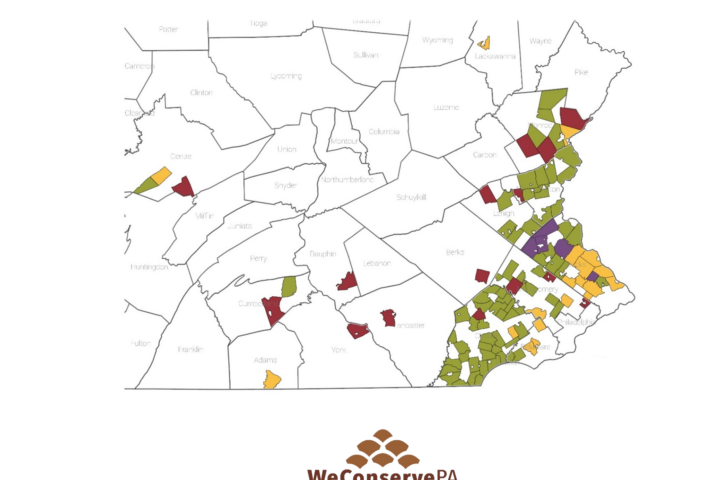Good street and sidewalk design improves public health and safety, accommodates a variety of users, reduces environmental impacts, and makes communities more inviting. WeConservePA has updated its guide, Street and Sidewalk Design, which explores contemporary community-focused street and sidewalk design practices that promote a wide range of uses, reduce stormwater runoff, and enhance and improve accessibility, among other benefits. This guide explains the key elements of good street and sidewalk design and how to implement them via municipal ordinances or direct capital investments.
For decades, municipalities—urban, suburban, and rural alike—adopted street-design standards that showed strong preference to cars. However, in recent years, transportation planners have been rebalancing transportation priorities, giving attention to streets and sidewalks that can safely accommodate a wide variety of people, uses, and needs—including those of pedestrians and bicyclists—in a manner that considers community priorities and land-use implications.
Municipalities can greatly improve the safety and utility of their transportation infrastructure by using effective planning concepts such as complete streets, context sensitive design, and traffic calming. To translate this planning into practice, municipalities may update their subdivision and land development ordinances to require new developments to conform to the standards; municipalities may also improve existing streets and sidewalks, using funding from grants, tax revenue, or bonding.


